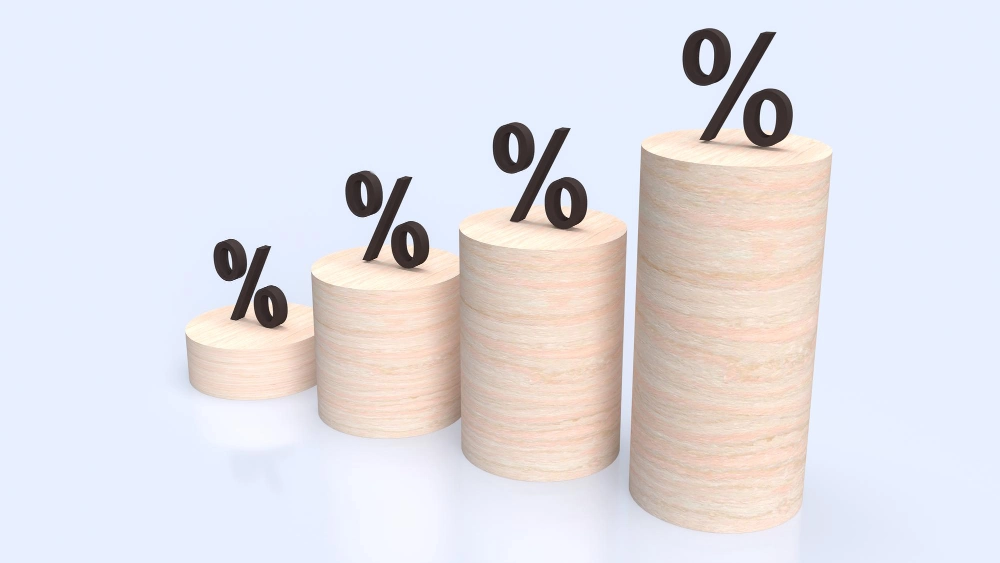Searching for your dream home is often a long journey, and one of the biggest challenges is understanding financing, especially a mortgage (KPR). In practice, mortgages can apply either a fixed rate or a floating rate depending on the bank or financing institution.
A floating rate mortgage is a type of home loan with an adjustable interest rate that fluctuates based on market conditions. This type of mortgage offers flexible installments that may vary from one period to another. Your monthly payments can increase or decrease depending on the benchmark interest rate set by the bank.
While it provides certain advantages, a floating rate mortgage also carries risks if interest rates rise. Therefore, it is important to learn how to calculate floating rate mortgages in order to plan your installments properly. Let’s dive into the full explanation below.
What Is a Floating Rate Mortgage?
A floating rate mortgage is a home loan with an interest rate that fluctuates based on market conditions or the benchmark interest rate set by banks. This means your monthly payments are not fixed, but instead adjust according to interest rate movements.
The key advantage of a floating rate mortgage compared to a fixed rate is its flexibility. This flexibility allows your monthly installment to decrease when interest rates go down. However, the biggest risk is when interest rates rise — your monthly payments will automatically increase.
How Floating Rate Mortgages Work
After the fixed-rate period ends, the mortgage interest rate automatically adjusts to prevailing market conditions and benchmark rates. If benchmark interest rates increase, your mortgage interest rate will also rise, leading to higher monthly payments.
Conversely, when benchmark rates fall, your mortgage interest rate will also decrease, resulting in lighter monthly installments. These adjustments are usually made periodically — for example, every 6 or 12 months — depending on the bank’s policy.
As an illustration, if your floating rate mortgage initially had a 10% interest rate and the benchmark rate rises to 12%, your mortgage interest rate will also increase. As a result, the monthly installment you must pay will be higher than in the previous period.
Characteristics of Floating Rate Mortgages
Floating rate mortgages have several unique traits that distinguish them from fixed-rate mortgages. Here are some of their characteristics:
1. Initial Fixed-Rate Period
Floating rate mortgages typically start with a fixed-rate period of 1–3 years. This aims to provide stable monthly installments during the early phase, making it easier to predict payments before switching to floating interest.
2. Interest Rates Follow the Market
Mortgage rates are not fixed — they follow changes in the benchmark interest rate. If the benchmark rises, so will your mortgage rate, and vice versa. Borrowers need to monitor interest rates regularly to manage their finances effectively.
3. Installments May Fluctuate
Monthly installments under a floating rate mortgage can increase or decrease depending on interest rate changes. This differs from fixed-rate mortgages, where payments remain constant. Flexibility offers benefits when rates fall, but carries higher risks when they rise.
4. Periodic Adjustments
Floating rate adjustments usually occur every 6 or 12 months, depending on each bank’s policy. This means your monthly installment may rise or fall based on benchmark rate changes during that period.
Factors Affecting Floating Rate Mortgages
Several factors influence floating mortgage rates, making them dynamic and dependent on market conditions. Key factors include:
1. Bank Indonesia Benchmark Rate (BI-Rate)
The BI-Rate serves as the primary reference for banks when determining floating mortgage rates. Every adjustment by Bank Indonesia, whether an increase or decrease, directly affects floating mortgage rates.
2. Macroeconomic Conditions
Macroeconomic performance significantly impacts mortgage interest rates, as it reflects overall economic health. Key indicators include inflation, economic growth, and money market stability.
3. Monetary and Fiscal Policies
Floating mortgage rates are also shaped by government and banking monetary or fiscal policies.
-
Monetary policies include liquidity regulations and interest rate adjustments by the central bank, which affect funding availability and borrowing costs.
-
Fiscal policies involve government spending and taxation, which can impact economic conditions and, in turn, mortgage interest rates.
The Role of Bank Indonesia’s Benchmark Rate in Floating Mortgages
Bank Indonesia’s benchmark rate (BI-Rate) acts as the main reference point for banks in setting floating mortgage interest. Mortgage interest rates will follow BI-Rate changes, meaning every adjustment directly impacts borrowers’ monthly installments.
If BI raises the benchmark rate to control inflation or maintain economic stability, floating mortgage rates will also increase, causing higher installments. Conversely, when BI lowers the benchmark rate, mortgage interest rates decline as well.
The BI-Rate plays a crucial role in guiding credit interest rate movements in the market and helps borrowers anticipate mortgage payment fluctuations.
How to Calculate Floating Rate Mortgages
After understanding the influencing factors and the role of BI in determining floating rates, you also need to know how to calculate them. This allows you to estimate installment changes each month. The steps are as follows:
1. Determine the Loan Principal
First, identify your loan principal. For example, if you purchase a house worth IDR 600 million and pay a down payment of IDR 100 million, your loan principal is IDR 500 million.
2. Identify the Floating Interest Rate
Floating mortgage rates usually follow the bank’s benchmark rate, such as the BI-Rate or the bank’s base lending rate. For example, assume a floating interest rate of 8% per year.
3. Choose the Loan Tenure
Select the loan term, such as 15 or 20 years. The loan tenure will determine the size of monthly installments.
4. Calculate Monthly Installments
Use the following simple formula with effective interest per month:
Monthly installment = (Loan principal × Annual interest rate) / 12 + (Loan principal / Loan tenure in months)
Example Calculation:
-
Loan principal = IDR 500,000,000
-
Interest rate = 8% per year
-
Tenure = 20 years (240 months)
-
Monthly interest = 8% / 12 = 0.0067
Interest installment (first month) = IDR 500,000,000 × 0.0067 = IDR 3,333,000
Principal installment = IDR 500,000,000 / 240 = IDR 2,083,000
Total first-month installment = IDR 3,333,000 + IDR 2,083,000 = IDR 5,416,000
Disclaimer: The financing scheme above is only an illustration. Actual calculations may vary depending on the loan type and each financial institution’s policy.
That’s the explanation of floating rate mortgages, covering their definition, mechanism, and factors that affect installments. Floating rate mortgages offer flexibility in payments because rates follow market conditions, while also giving you the chance to enjoy lighter installments when interest rates fall.
If you want to own your dream home, make sure to choose financing that matches your financial condition. BFI Finance provides trusted financing solutions to help you achieve it more easily.
You can apply with collateral such as motorcycle BPKB, car BPKB, or property certificates (house/shop/office) for various needs, including home purchases, renovations, or property investments.
All BFI Finance services are licensed and supervised by the Financial Services Authority (OJK), ensuring safe and reliable transactions. With over 40 years of experience, BFI Finance stands as a financing company ready to support your financial needs with professional service.
Let’s make your dream home a reality now, because #SelaluAdaJalan with BFI Finance.







